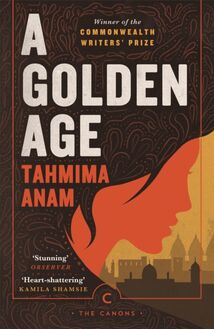True Adventures of the Rolling Stones , livre ebook
283
pages
English
Ebooks
2012
Vous pourrez modifier la taille du texte de cet ouvrage
Obtenez un accès à la bibliothèque pour le consulter en ligne En savoir plus
Découvre YouScribe en t'inscrivant gratuitement
Découvre YouScribe en t'inscrivant gratuitement
283
pages
English
Ebooks
2012
Vous pourrez modifier la taille du texte de cet ouvrage
Obtenez un accès à la bibliothèque pour le consulter en ligne En savoir plus
Publié par
Date de parution
05 avril 2012
Nombre de lectures
3
EAN13
9780857863522
Langue
English
Poids de l'ouvrage
2 Mo
Publié par
Date de parution
05 avril 2012
Nombre de lectures
3
EAN13
9780857863522
Langue
English
Poids de l'ouvrage
2 Mo
This edition published in Great Britain in 2012 by Canongate Books, 14 High Street, Edinburgh, EH1 1TE
www.canongate.tv
Copyright © Stanley Booth, 1984, 2000 Introduction copyright © Greil Marcus, 2012
The moral rights of the authors have been asserted
Originally published in the USA as Dance with the Devil by Random House, Inc., in 1984
The image on page ii is © Jim Marshall Photography LLC, 1973
The Canon’s editorial board: Ailah Ahmed, Jamie Byng, Liz Calder, Geoff Dyer, Nick Lezard, John Seaton and Erica Wagner
British Library Cataloguing-in-Publication Data A catalogue record for this book is available on request from the British Library
ISBN 978 0 85786 351 5 eISBN 978 0 85786 352 2
Typeset in Goudy by Palimpsest Book Production Ltd, Falkirk, Stirlingshire
This digital edition first published in 2012 by Canongate Books
CONTENTS
Introduction by Greil Marcus
The Killing Ground
The Elephants’ Graveyard
Dance to the Death
Coda
Afterword: One Half of Forever
INTRODUCTION
by Greil Marcus
At the end of this book, in an afterword written sixteen years after The True Adventures of the Rolling Stones was first published, which was fifteen years after the events that the book recounts, Stanley Booth names his ‘stylistic heroes’. First there’s Jack Kerouac, then Vladimir Nabokov, Evelyn Waugh ‘and – most of all – Raymond Chandler. I tried,’ Booth writes, ‘to make every sentence one that could be spoken by Chandler’s detective narrator Philip Marlowe.’
He comes close. ‘He was the only person I had ever seen who could make falling asleep pretentious’ is a line Chandler would have copied in his notebook. Sometimes, as when he follows a typically gooey description of a first acid trip with perhaps the only truly uncanny acid-trip description in print – uncanny because it is just a hair away from ordinary life – Booth steps back in literary time from Chandler and forward from him, so that you hear echoes of both Dashiell Hammett and Ross Macdonald. Booth and a friend have found their way to an all-night café, and at the café ‘there was a cop, all dark blue, black leather, and menacing devices. He was sitting at a table with a cup of coffee, talking to someone on a walkie-talkie. There had been a burglary at a warehouse in a black neighborhood. The burglar was a black teenage girl. The cop said he’d be right there, his tone loaded with sex and sadism. The only way to be intimate with a black girl was to punish her. After he left, the place still reeked with his lust, if you had taken acid.’
There’s more to the connection than style – or maybe the question of what constitutes a style, what goes into it, what stands behind it, encompasses more than we tend to think it does. In one of the most damning, tough-minded moments in The True Adventures of the Rolling Stones , Booth draws down on the weight of social history that hangs in the air over each show chronicled – from the first night of the tour in Fort Collins, Colorado, on November 7 to the last day at Altamont on December 6 – and that hangs over each song playing on the radio and in Booth’s pages. It is the kind of history that provokes Booth to write that ‘in 1969, few people at Madison Square Garden on Thanksgiving Day thought that what the Rolling Stones were doing was a performance . . . [they] had, most of them, lived through a time of cold war, hot war, race riots, student riots, police riots, assassinations, rapes, murders, trials, waking nightmares. But Keith, Mick, Charlie, Bill, and the new guitar player were impersonating the Rolling Stones, and the audience were impersonating their audience . . . dancing under the circumstances seemed to have a transcendent value. Many people thought then that dancing and music could have a major role in changing the structure of society. They may have been naïve, but they were much more interesting than the sensible people who came along later.’ Booth’s most damning words are these: ‘In the sixties we believed in a myth – that music had the power to change people’s lives. Today we believe in a myth – that music is just entertainment’ – or that style is just style, or that detective stories are just detective stories.
In 2011, eleven years after Booth honoured Raymond Chandler in the afterword to this book, the British novelist Jenny Diski, writing in the London Review of Books of the time when she, too, believed in the myth Booth once believed in, described Philip Marlowe and Hammett’s Sam Spade as figures of a later era, regardless of their provenance in the Twenties or Thirties or Forties. They were ‘the hard men with soft, democratic centres, American Romantics tinged with the Founding Fathers and Melville’s melancholic sense of humanity’. They were ‘dragged, flinching with distaste, into the dirty underworld by good and bad men and women, and by their doomed vocation to set the world to rights. Private eyes, but really public defenders . . . men who behaved as if there was a point in trying to right wrongs, even if they knew the world better than that.’ Looking back on nights in theaters watching Humphrey Bogart in John Huston’s film of Hammett’s The Maltese Falcon or in Howard Hawks’s film of Chandler’s The Big Sleep , to Diski the legacy of style was clear enough: ‘And maybe, later on,’ she wrote, ‘it was Marlowe and Spade who gave us the courage and foolheadedness to take to the streets.’
This notion might seem far-fetched, even contrived, if it weren’t for Booth’s affirmation that every time he stood on the stage behind one of Keith Richards’s amps as the Rolling Stones played ‘Gimmie Shelter’ or ‘Street Fighting Man’, Philip Marlowe was standing behind him. What Diski reveals is how big and how deep Booth’s ambitions really were when he said he didn’t want a sentence in his book that Marlowe couldn’t speak, such as this one: ‘There is at the heart of this music a deep strain of mysterious insurrection, and the music dies without it.’
Fervor drives The True Adventures of the Rolling Stones , the fervor of, among other things, trying to locate the heart of that insurrection – what Albert Camus, in The Rebel , describing a prisoner in Soviet Siberia who had constructed a silent piano with wooden keys, called ‘that harmonious insurrection’ – to locate it, name it, describe it, before it slips away. ‘You had to be there,’ Booth writes of a show at the LA Forum in Los Angeles. He doesn’t mean that he can’t call up what went on that night; he can. He means that if you had had the choice to go you couldn’t, as a serious, thinking, breathing person, have passed it up. ‘You had to be there’ – and because you weren’t, Booth is saying, it’s my obligation to put you there, onstage, backstage, in the crowd, in the sound as it happened.
Booth’s insider’s chronicle of the Rolling Stones’ American tour in the fall of 1969 is interlaced with chapters that recreate the history of the band from its formation to the death of founding member Brian Jones just months before the tour began. Thanks to long, seamlessly integrated stories told by Keith Richards, Charlie Watts, the late Ian Stewart (the original Rolling Stone, excluded because of his looks, who became the band’s roadie and offstage piano player) and Shirley Arnold (the fan who became the manager of the fan club), the sense of Booth’s having been present during the early days of the band is almost as strong as it is in the chapters from the fall of 1969, when he really was there. ‘I’ll never forget Bo’s face when Brian played some of those Elmore James things,’ Stewart tells Booth, relating a backstage palaver in the UK in 1963. Booth instantly steps into Stewart’s shoes: ‘If the Stones were astonished to be playing with Bo Diddley, how must Bo Diddley have felt, seeing a blond English cherub, with a bruised and swollen eye, playing just like Elmore James, who had learned from Robert Johnson, who had learned at the crossroads from the Devil himself.’ But Booth’s presence is so strong for certain nights in 1969 that you almost don’t want to be there, for fear that the music as Booth renders it won’t live up to the hopes invested in it – invested in it by the musicians, the audience, the writer, and, catching the fever, the reader. And there are the incidents from Altamont, the disastrous free concert that ended both the band’s tour and the decade the tour summed up, which are so poetically horrible – ‘a tall white boy with a black cloud of electric hair was dancing, shaking, infuriating the Angels by having too good a time . . . [an] Angel pushed him and another Angel started laying into the crowd with a pool cue and then a number of Angels were grabbing people, hitting and kicking, the crowd falling back before the fury with fantastic speed, the dancer running away from the stage, the Angels catching him from behind, the heavy end of a pool cue in one long arc crashing into the side of his head, felling him like a sapling so that he lay straight and didn’t move and I thought, My God, they’ve killed him’ – that they truly make you wish you weren’t there. I was, as it happened, and as I read Booth’s pages again, forty-two years later, I feel every terror, every horror, every repeating shock. The visions rush back in a flash – a fat man, covered with dried blood, his teeth knocked out, wandering naked behind the stage in the dark, hours after the Hells Angels had beaten him; a naked woman, covered in bruises, clutching a blanket that someone had given her to cover herself with, a foreign object she’d forgotten she had and forgotten to drop, that trailed in the dirt – as if it wasn’t over yet.
It isn’t; that’s the burden of Booth writing of the time that has passed between a phone call in 1969 – ‘We said goodbye, a thunderhead of music, drugs, money and anguish starting to gather out in the future’ – and the years that followed: ‘How ready were any of us to live in the real world, a world that would each year become more like Altamont?’ Those














